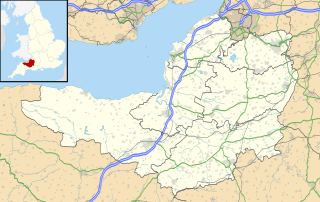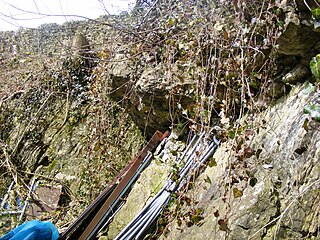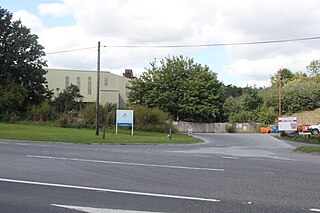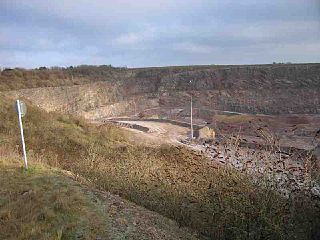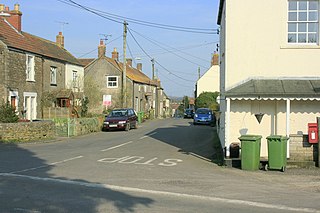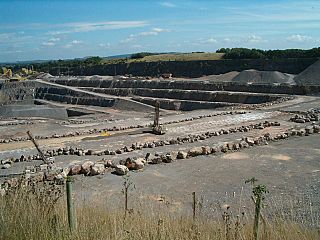| Site of Special Scientific Interest | |
| Area of Search | Somerset |
|---|---|
| Grid reference | ST702437 |
| Coordinates | 51°11′30″N2°25′40″W / 51.19174°N 2.42781°W Coordinates: 51°11′30″N2°25′40″W / 51.19174°N 2.42781°W |
| Interest | Geological |
| Area | 0.6 hectares (0.0060 km2; 0.0023 sq mi) |
| Notification | 1984 |
| Natural England website | |
Leighton Road Cutting (grid reference ST702437 ) is a 0.6 hectare geological Site of Special Scientific Interest between East Cranmore and Cloford in Somerset, notified in 1984. It is a Geological Conservation Review site

The Ordnance Survey National Grid reference system is a system of geographic grid references used in Great Britain, distinct from latitude and longitude. It is often called British National Grid (BNG).

The hectare is an SI accepted metric system unit of area equal to a square with 100-metre sides, or 10,000 m2, and is primarily used in the measurement of land. There are 100 hectares in one square kilometre. An acre is about 0.405 hectare and one hectare contains about 2.47 acres.

Somerset is a county in South West England which borders Gloucestershire and Bristol to the north, Wiltshire to the east, Dorset to the south-east and Devon to the south-west. It is bounded to the north and west by the Severn Estuary and the Bristol Channel, its coastline facing southeastern Wales. Its traditional border with Gloucestershire is the River Avon. Somerset's county town is Taunton.
Leighton Road Cutting provides exposure of a series of early Jurassic limestones, of Lower Lias age, which are the only known outcrops of these particular rocks to occur in a normal horizontally-bedded sequence in the Mendips. The discovery of the Leighton Road Cutting sections enabled geologists to understand how the fissure infills seen widely throughout the Mendips had been formed.
The Jurassic period was a geologic period and system that spanned 56 million years from the end of the Triassic Period 201.3 million years ago (Mya) to the beginning of the Cretaceous Period 145 Mya. The Jurassic constitutes the middle period of the Mesozoic Era, also known as the Age of Reptiles. The start of the period was marked by the major Triassic–Jurassic extinction event. Two other extinction events occurred during the period: the Pliensbachian-Toarcian extinction in the Early Jurassic, and the Tithonian event at the end; however, neither event ranks among the "Big Five" mass extinctions.

The Mendip Hills is a range of limestone hills to the south of Bristol and Bath in Somerset, England. Running east to west between Weston-super-Mare and Frome, the hills overlook the Somerset Levels to the south and the Chew Valley and other tributaries of the Avon to the north. The hills give their name to the local government district of Mendip, which administers most of the area. The higher, western part of the hills, covering 198 km2 (76 sq mi) has been designated an Area of Outstanding Natural Beauty (AONB), which gives it a level of protection comparable to a national park.

